Last Chance to Catch NYC's Holiday Notalgia Train
We met the voices of the NYC subway on our nostalgia ride this weekend!

The Rubin Museum, located on West 17th Street in Chelsea, is known for its innovative programming, which have included an overnight “Dream Over,” block parties, and an “OM Lab.” All of the museum’s work is connected to the art and culture of the Himalayas and neighboring countries, but the exhibits and events cross eras of time. Similarly, the architectural design of the museum melds modern with traditional – and you can even join in a Himalayan happy hour at the bar.
The Rubin Museum’s newest exhibit, called “The World is Sound,” has been on display for about a month now, featuring work from over twenty artists that showcase the relationship between sound and Buddhist thought. The exhibit, on display until January 2018, is part of a series of events that together make up The Rubin’s “Summer of Sound.” In addition to this exhibit, the museum will be hosting a number of sound-related events throughout the summer, including sound meditations and Deep Listening workshops, as well as a series of film screenings that include Blue Velvet and Apocalypse Now.
The exhibit itself is on the museum’s top floor. Walking around, you might soon find yourself back where you started. This circular design reflects a central Buddhist idea, which is that life exists in a circular formation rather than in a linear one, and birth and death are not finite ends but rather parts of a circular journey of reincarnation and rebirth, culminating and ends with enlightenment.
“What I wanted to do with the exhibition was to create a healing space,” said the exhibit’s curator, Risha Lee. “If you’re immersed in a sound experience, it connects everyone around you. It’s personal, and it’s about creating a community, which is very much needed in our age. We’re trying to find positive ways to create a community that’s outside ourselves, and a visually dominated world is not effective in doing that and in fact is quite harmful.”
Sound is a way of combatting our oppressively visual culture, and it can also help undo the toxic emphasis on rights and wrongs that has come to define communication in our modern world. For after all, there’s no wrong sound exactly, only different gradations of it.
The exhibit’s centerpiece is Le Corps Sonore, a large-scale installation created specifically for The Rubin’s steel and marble spiral staircase, which stretches up six floors. Sound artists Éliane Radinge, Laetitia Sonami, and Bob Bielecki designed the installation to send audible vibrations echoing through the entire building. These vibrations change shape and sound depending on where the listener stands. The sound rises and falls like waves, sometimes ascending to a crescendo, other times barely a residual echo.
“It’s activating spaces all over the museum, transforming the museum experience, and giving an experiential, thought-provoking space for reflecting on what listening is,” said Lee. “One of the key ideas is listening with your whole body and trying to think about listening as something that happens to our ears, but can also be relational and political. Sound directs us, that also connects the historical to the contemporary.”
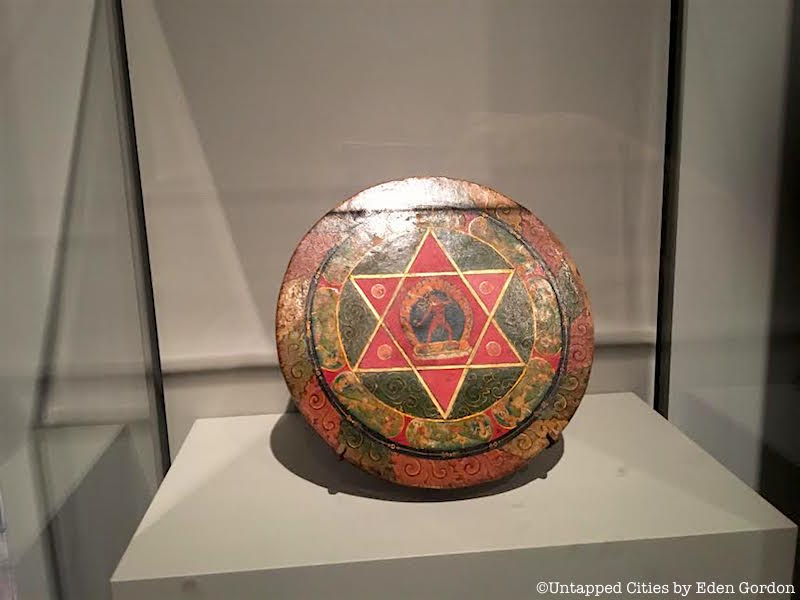
A quote from Herman Hesse’s Siddhartha adds scope to the circle metaphor: “We are not going in circles; we are going upwards. The path is a spiral,” wrote Hesse. In essence, the path is a journey upwards that is reflected by the staircase’s progression to the top.
Another central Buddhist concept is that all of these dimensions—space, beginnings, endings—are merely projections, kind of like sound waves. Sound is a metaphor for everything.
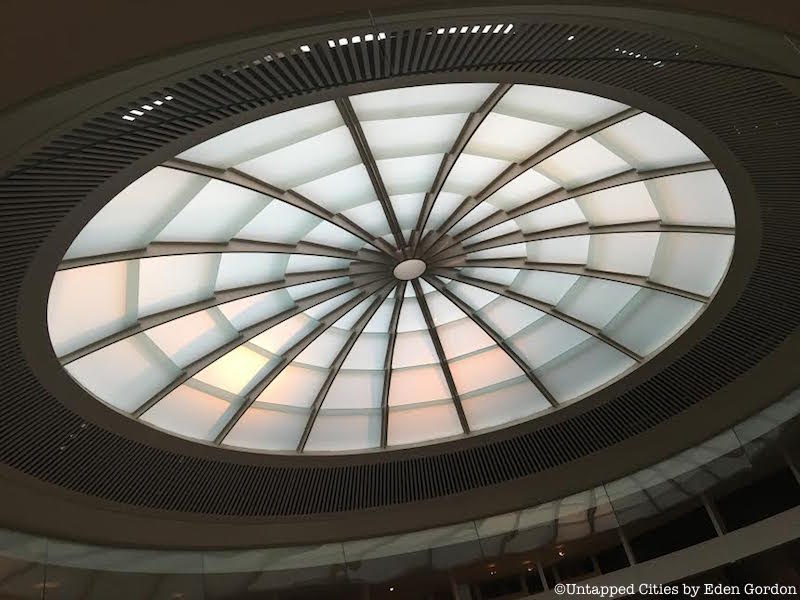
The exhibit features work by many contemporary artists, and it travels through various aspects of human experience as it is understood in Buddhism.
Immediately to the right of the elevators is a section that focuses on the interim period between death and rebirth that is called Bardo in Tibetan. This portion of the exhibition uses a sound meditation designed to simulate the soul’s experience journeying though this state, and also uses a light and sound exhibit to simulate the visual nature of this transient state.
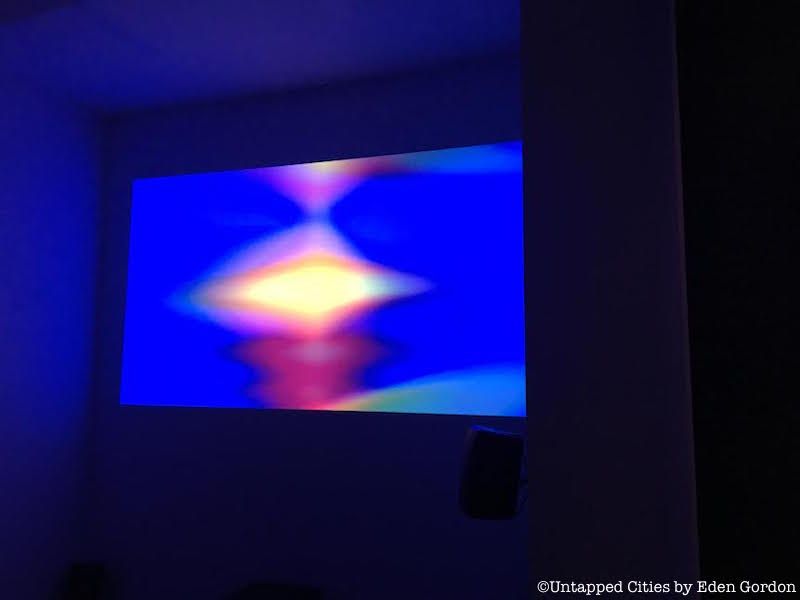
From there, the exhibit winds around to a section featuring various compositions meant to illuminate a new concept about sound and its place as a metaphor for life or as its own source of power.
There is also a section on Buddhist instruments used in various rituals. One of these rituals is called Chod, which involves a whirling dance as well as a musical collaboration between drums and bells. It is designed to facilitate the removal of the ego, which is an important step in the journey to enlightenment.
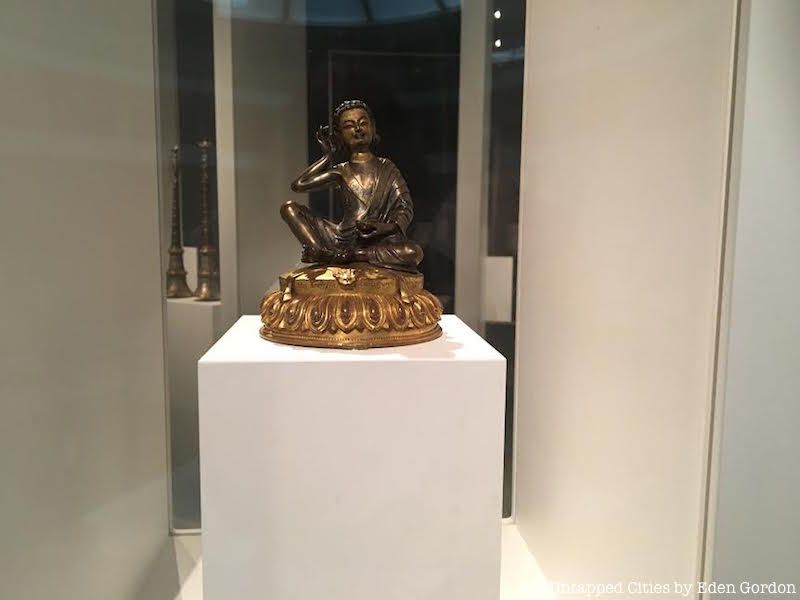
Elsewhere, there is a room that resonates with a cacophony of voices singing “Om,” their voices blending together to create a meditative sound bath. There is also a video that explains the correlations between sound, science, and Buddhism.
“Throughout our sonic exploration of the expansion of the universe, we have crafted micro-compositions that embody ideas of movement within the static nature of creation, memorials for past ghosts, loops that continue past the ideas of time, structure, rebirth, and the forever oscillating patterns of life,” said some of Columbia University’s Sound Arts MFA students in a collective statement about some of their soundscapes, which can be listened to at the exhibit. Other artists featured include Pauline Oliveros, a pioneer of the Deep Listening method, which focuses on incorporating listening into every aspect of life.
The Rubin’s new exhibit is both a window into a religious view and a portal leading out into a new way of listening and comprehending the world. Many of the Buddhist chants and mudras focus on invoking compassionate loving-kindness for all, and the warmth of these sentiments can be felt and heard all over the museum.
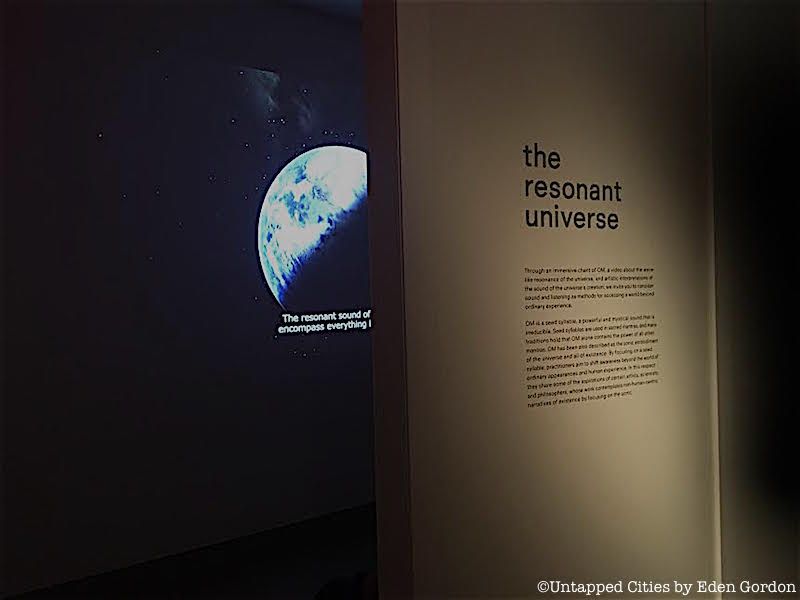
For more, read about the Tibetan shrine room at the Rubin Museum, the Buddha’s Tooth museum, and the tallest Buddha in NYC, which sits in the Mahayana temple of Chinatown.
Subscribe to our newsletter